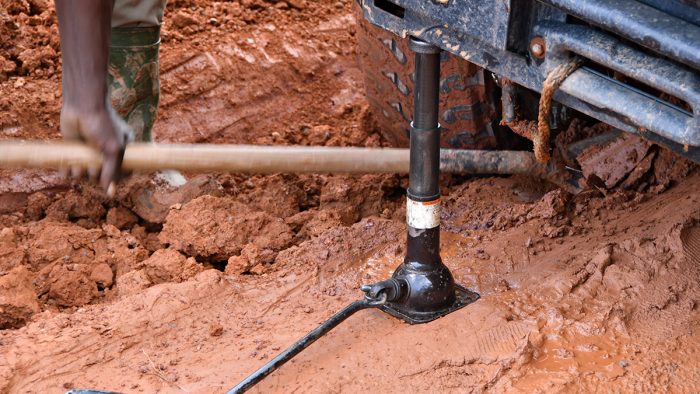‘I took the road to Foya and it took 20 hours!’ – with MAF Liberia, it takes an hour.
Nurse Amy Beyer has been working in Liberia since 2014. With less than 7% of the roads paved outside of Monrovia (source: USAID), and a monsoon season which lasts six months of the year, attempting a road trip in the hardiest of 4x4s is not for the faint-hearted. Amy tells MAF pilot, Steven Biggs, why she chooses MAF for her mission…
Ranked 175 out of 189 on the UN’s Human Development Index, Liberia is one of the poorest countries in the world. Life expectancy is a mere 64 years of age.
Civil war from 1989 to 2003 destroyed most of the country’s health facilities and medical practitioners are scarce.
According to the Liberia Medical and Dental Council, the country has just 298 doctors for a population of 5 million – a doctor patient ratio of 1:15,000. This is considerably lower than the World Health Organisation’s recommended 1:1,000 ratio to adequately run a country’s healthcare system.
‘There’s very limited access to doctors’
Infrastructure and healthcare outside of the capital, Monrovia, are even worse. Foya in Lofa County in the far north-western corner is particularly disadvantaged, as Nurse Amy Beyer explains:
‘In Foya, there’s very limited access to doctors. We treat who we can while we’re there. We always identity a couple of major problems, which cannot be solved locally, so we coordinate and bring patients back to Monrovia for surgery or whatever care they need before returning them to Foya.’
Amy is one of the team from Effort Baptist Church in America, which has been undertaking annual week-long medical and evangelical missions since 2003. They also deliver much-needed medical supplies.
She has been part of the mission since 2014. Every year – In partnership with MAF and the local church – Amy has helped facilitate medical clinics in remotest Liberia treating a range of conditions including malaria, diabetes, typhoid and worms.
Less time travelling, more time treating patients
Before they discovered MAF, Amy’s team would drive to Foya from Monrovia – the wettest capital in the world. She’ll never forget that first road trip:
‘On my first trip to Liberia, I took the road to Foya and it took 20 hours! It was a rough road -we had lots of car trouble. When you arrive after such a long journey, you have to recuperate before you start working! We have such a busy schedule, but the road to Foya takes away from that.
‘The following year, we used MAF and we’ve been flying with them ever since. It’s amazing that we can fly to Foya in an hour and spend more time with the people. It’s always good to be in Liberia on a MAF plane.’
Amy Beyer – nurse and MAF passenger
With many of the roads unpaved outside of Monrovia, and a monsoon season from May to October, getting from A to B on dirt tracks for half of the year is an arduous task.
No tarmac or drainage, plus heavy rain, inevitably leads to very poor driving conditions.
Copious amounts of mud make many regions inaccessible. Even hardy 4 x 4 vehicles slip and slide and have to be pushed out of deep waterlogged ditches. Other vehicles often get stuck or stranded overnight.
Good Liberian drivers don’t leave home without a winch, shovel and a pair of wellies!
But today, Amy’s travel woes are far behind her. With only an hour’s mud-free flight from Monrovia’s James Spriggs Payne Airport to Foya Kamara Airport, Liberia’s travel chaos is 9,000 feet below.
Instead of arriving exhausted and heading straight to bed after two days of gruelling, intermittent, rollercoaster road travel, Amy’s journey by air is smooth, fast and clean.
The essential medical supplies also arrive intact and unspoilt.
Amy and the team – courtesy of MAF pilot Steven Biggs – arrive refreshed and ready to serve the local people.












